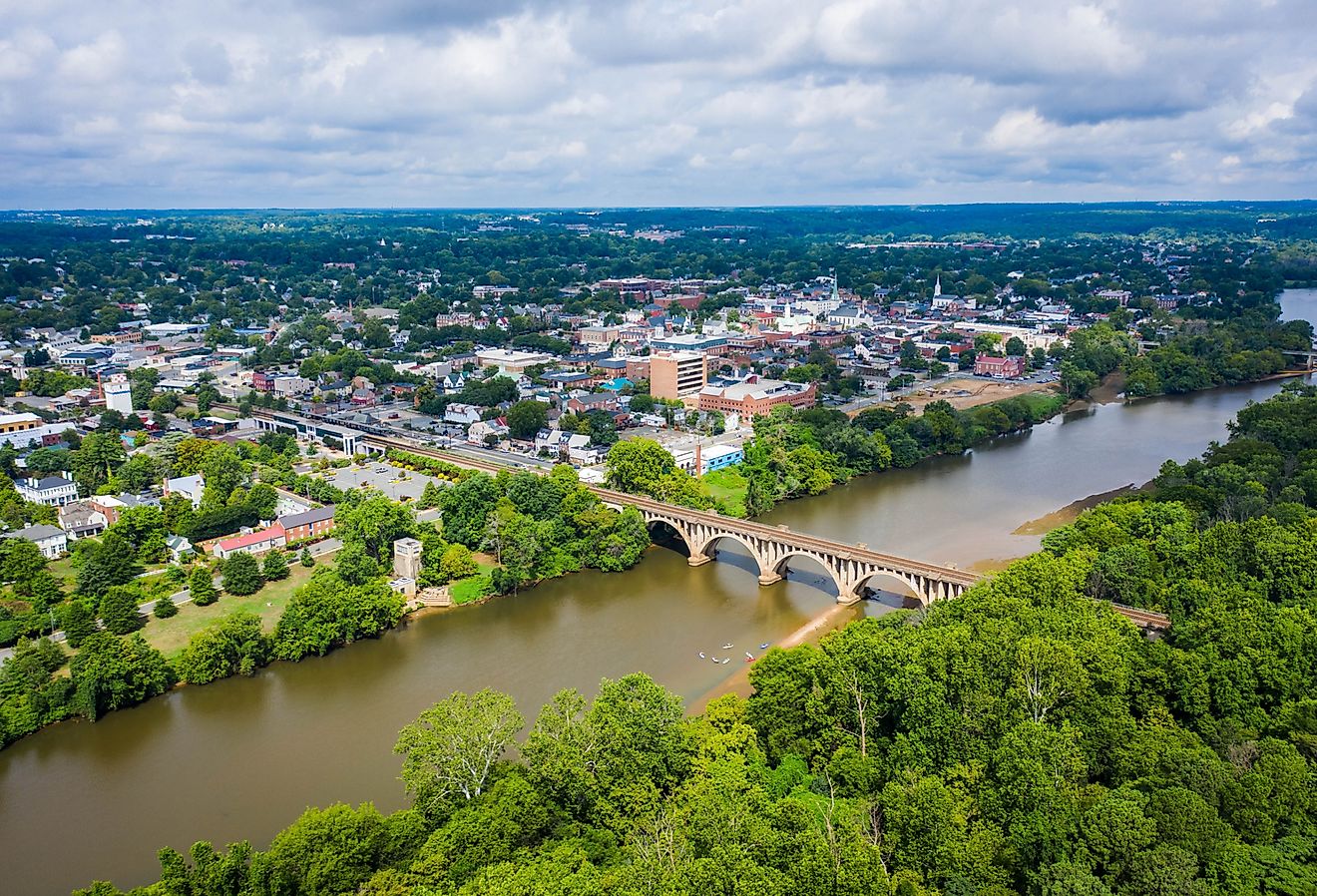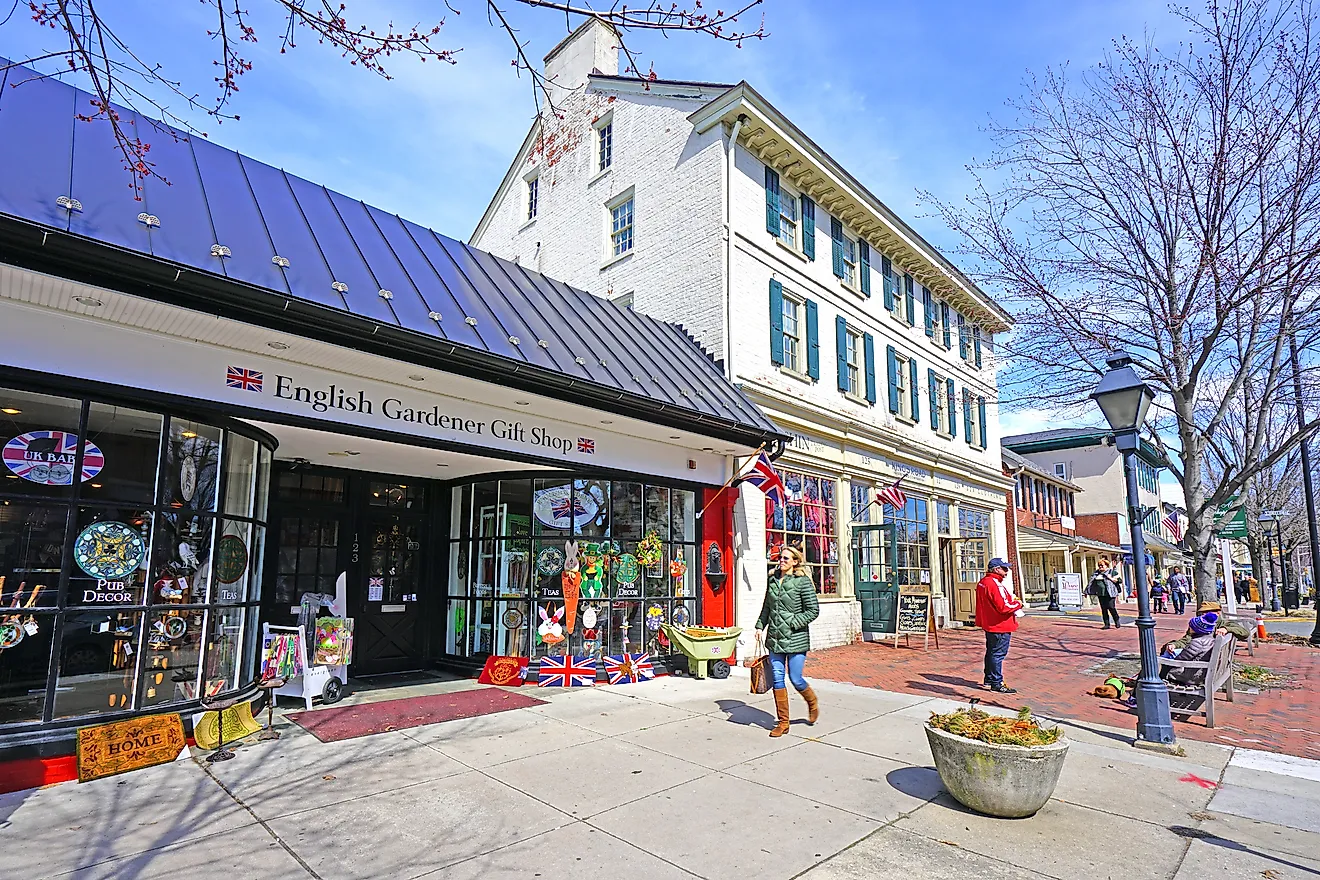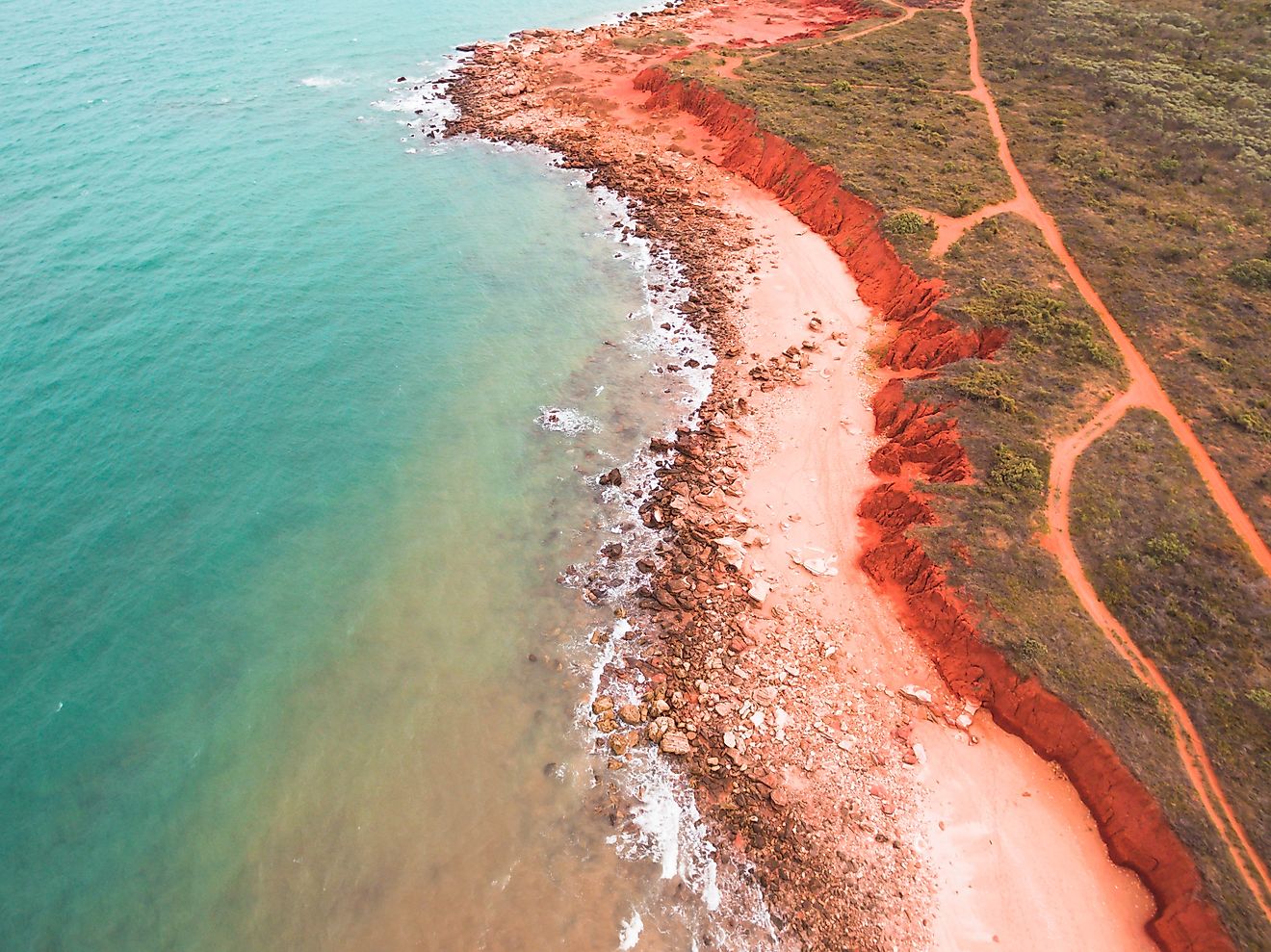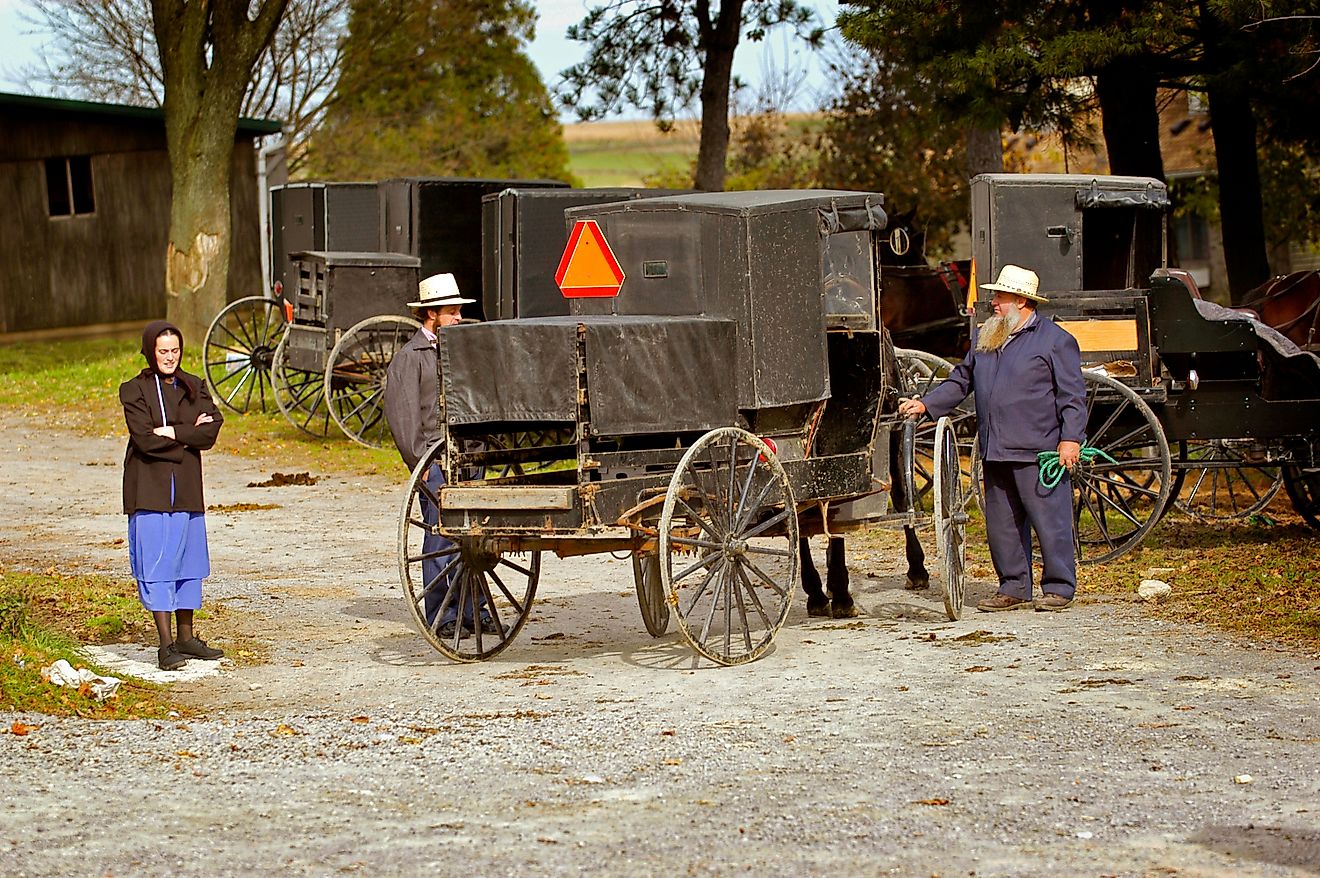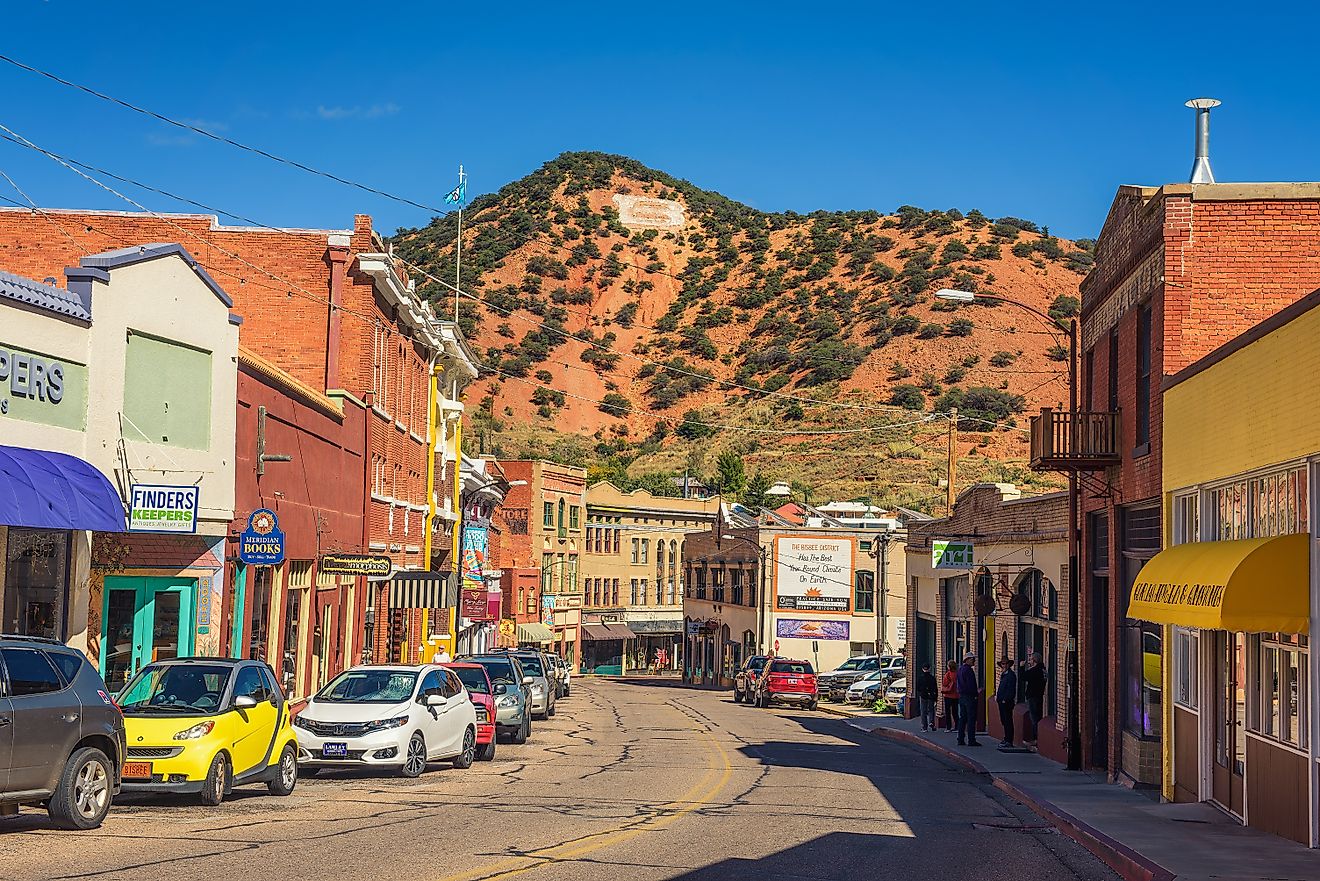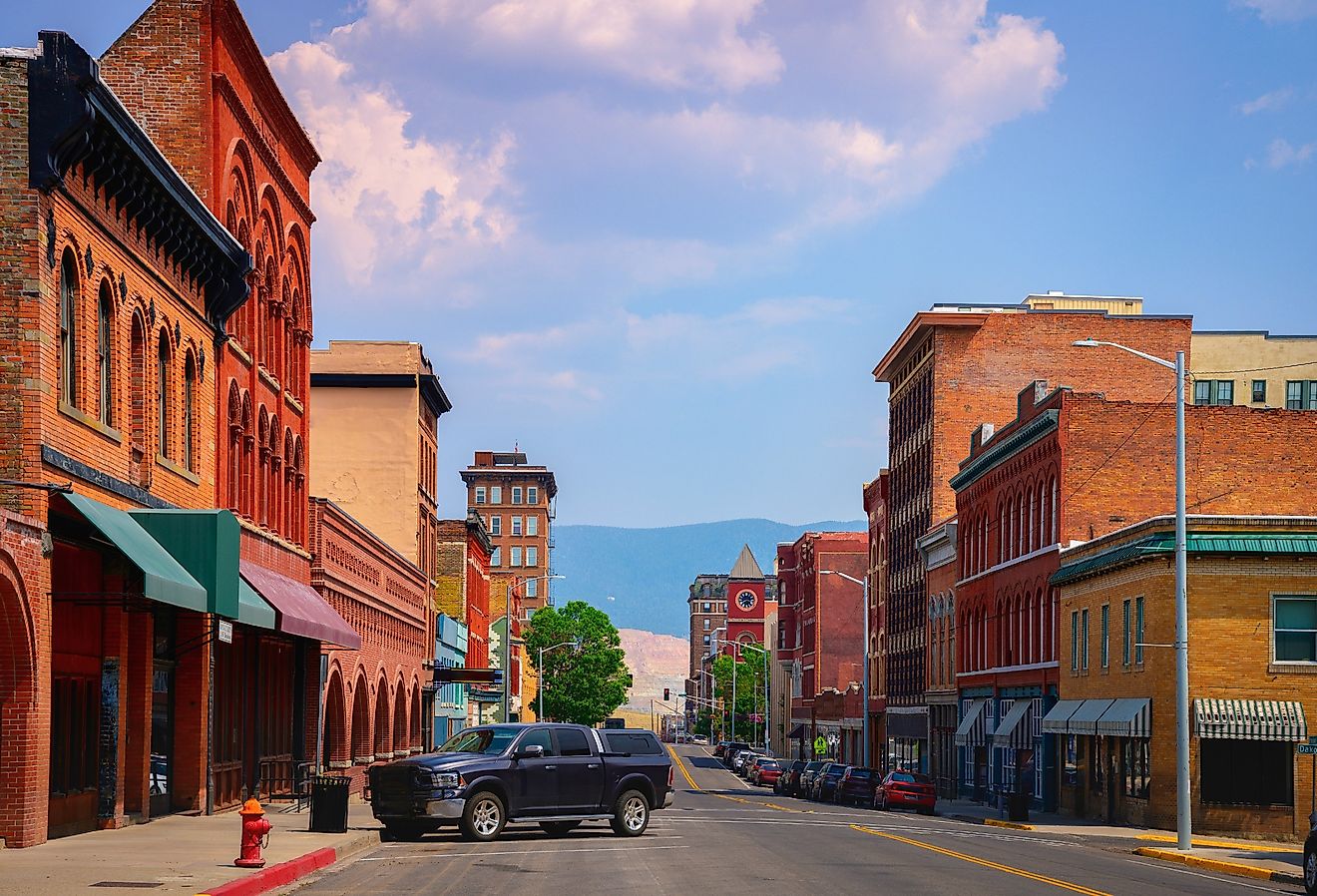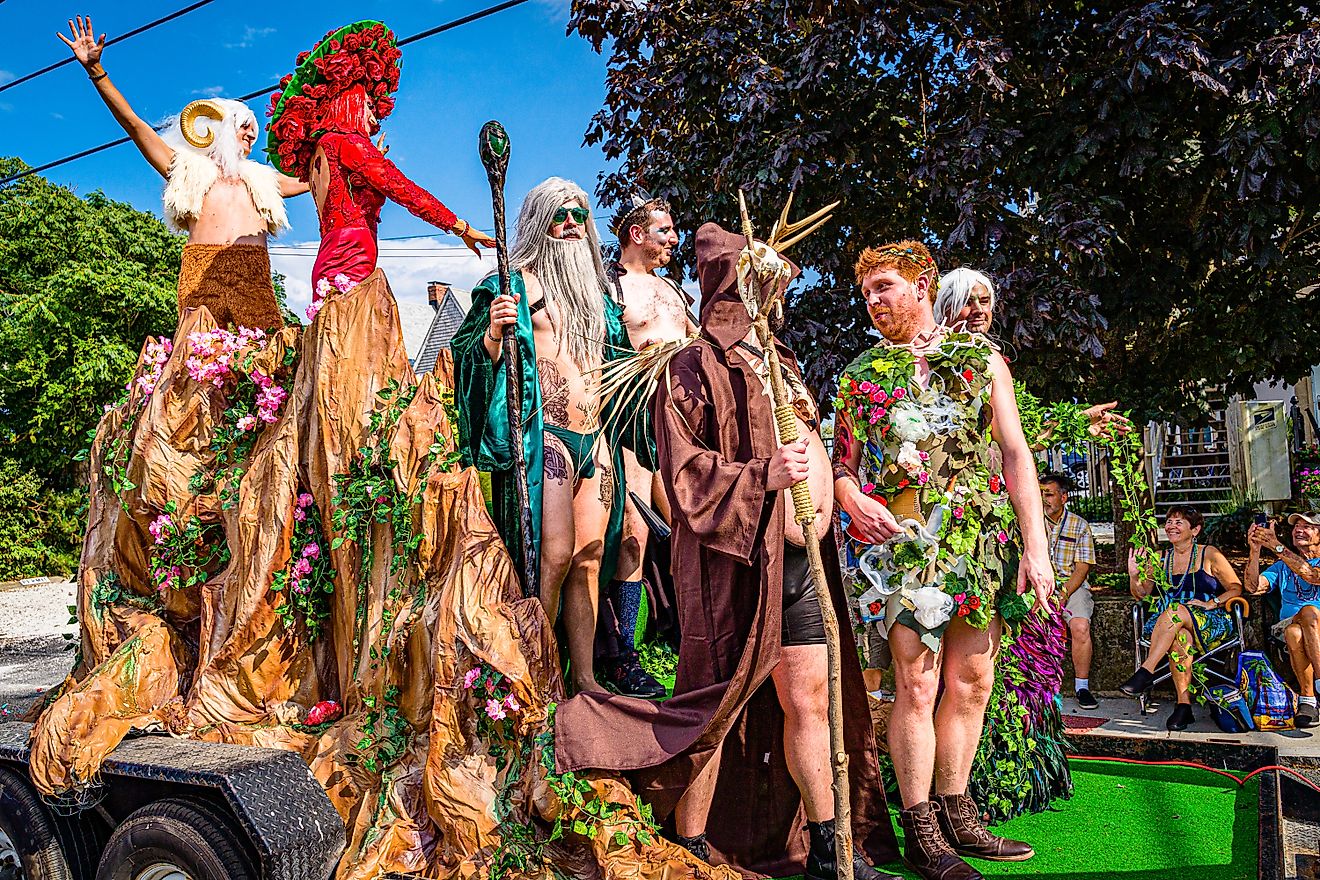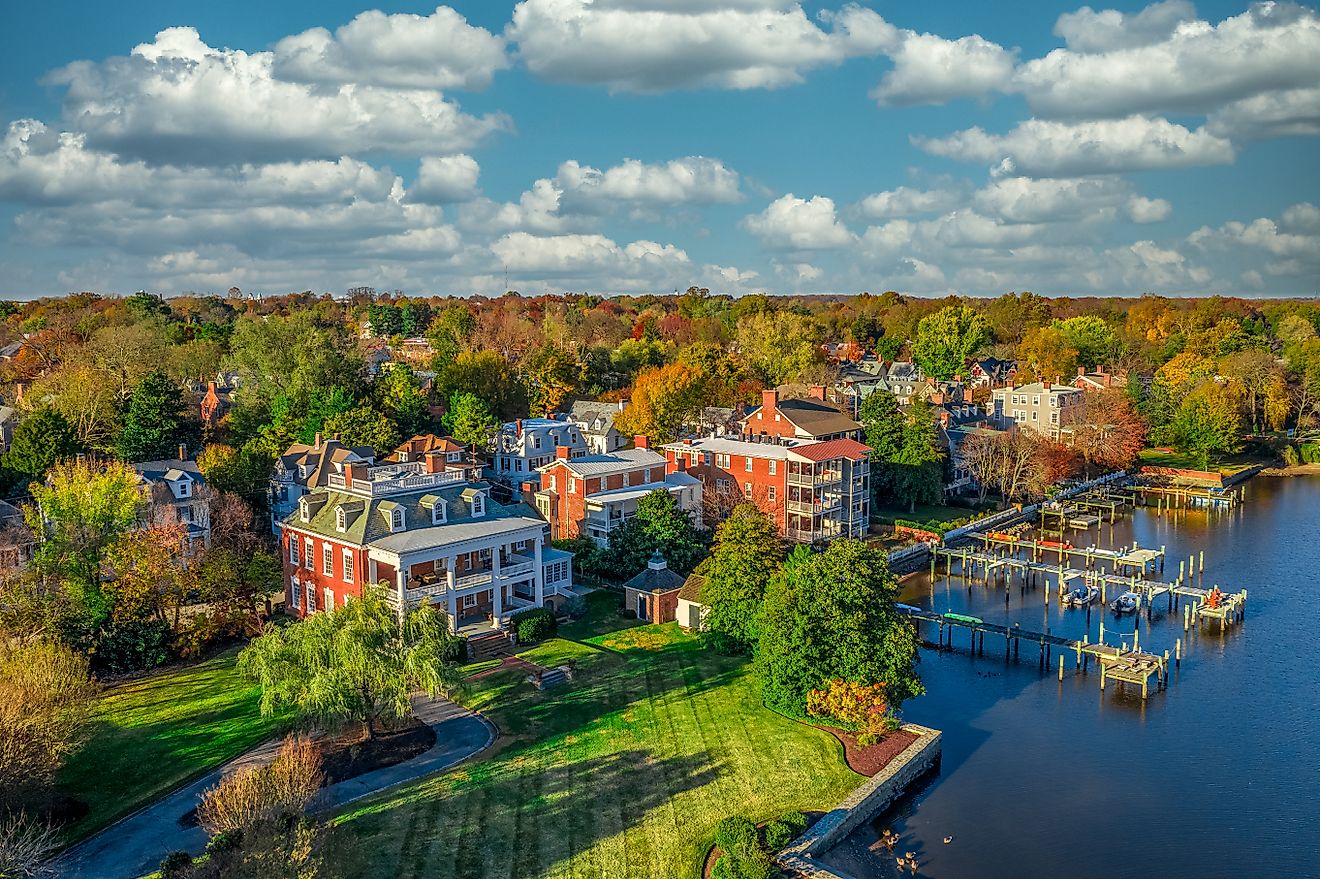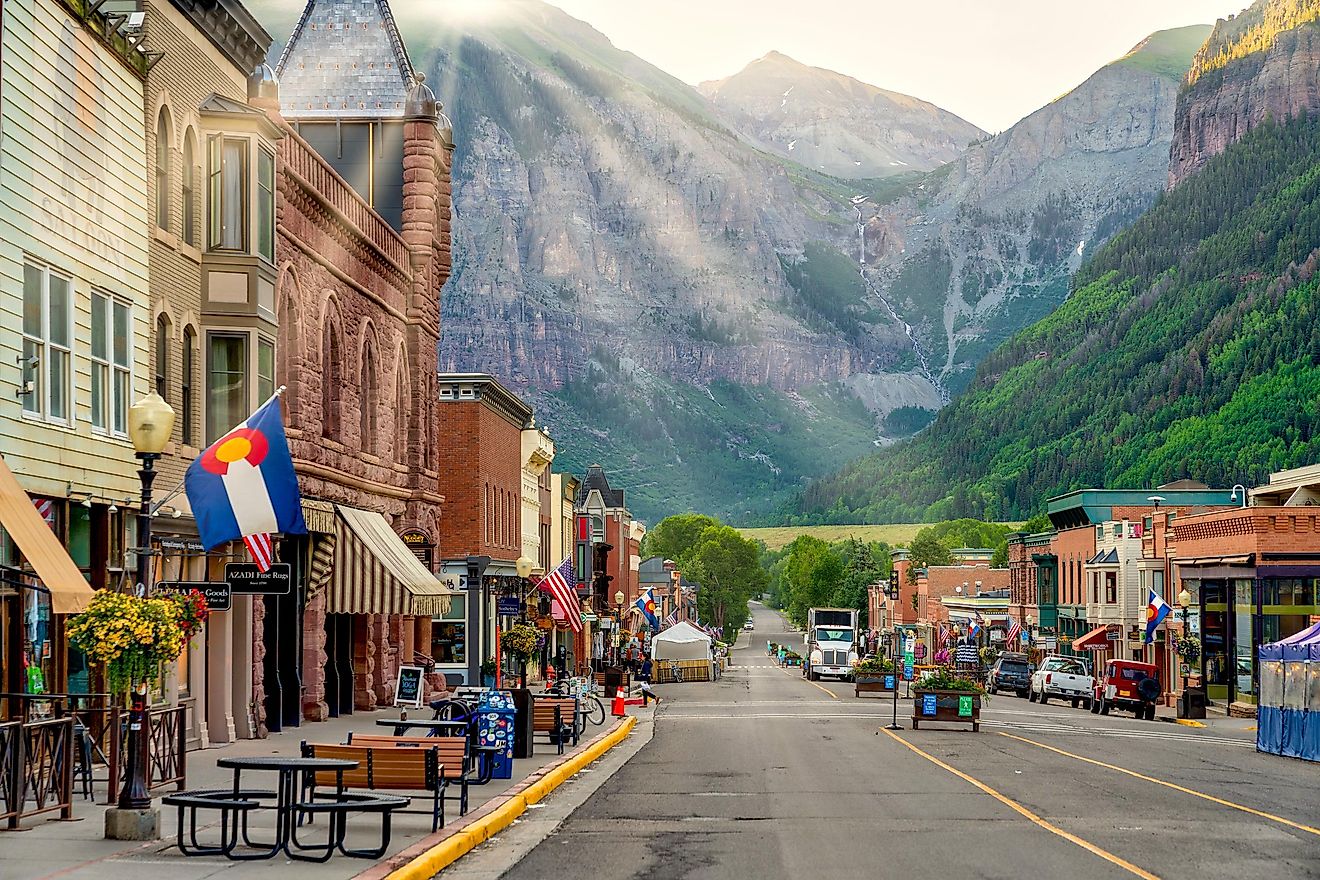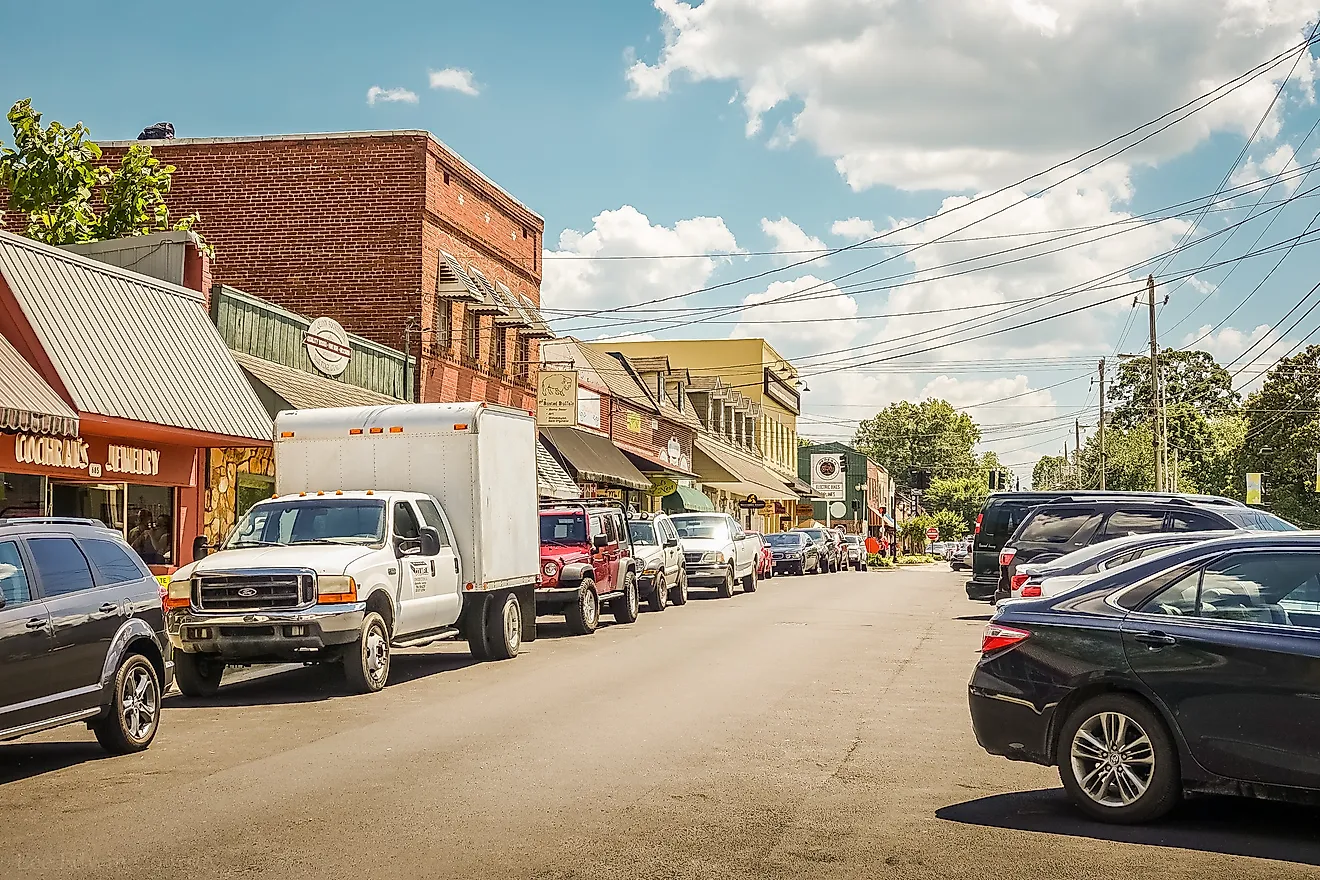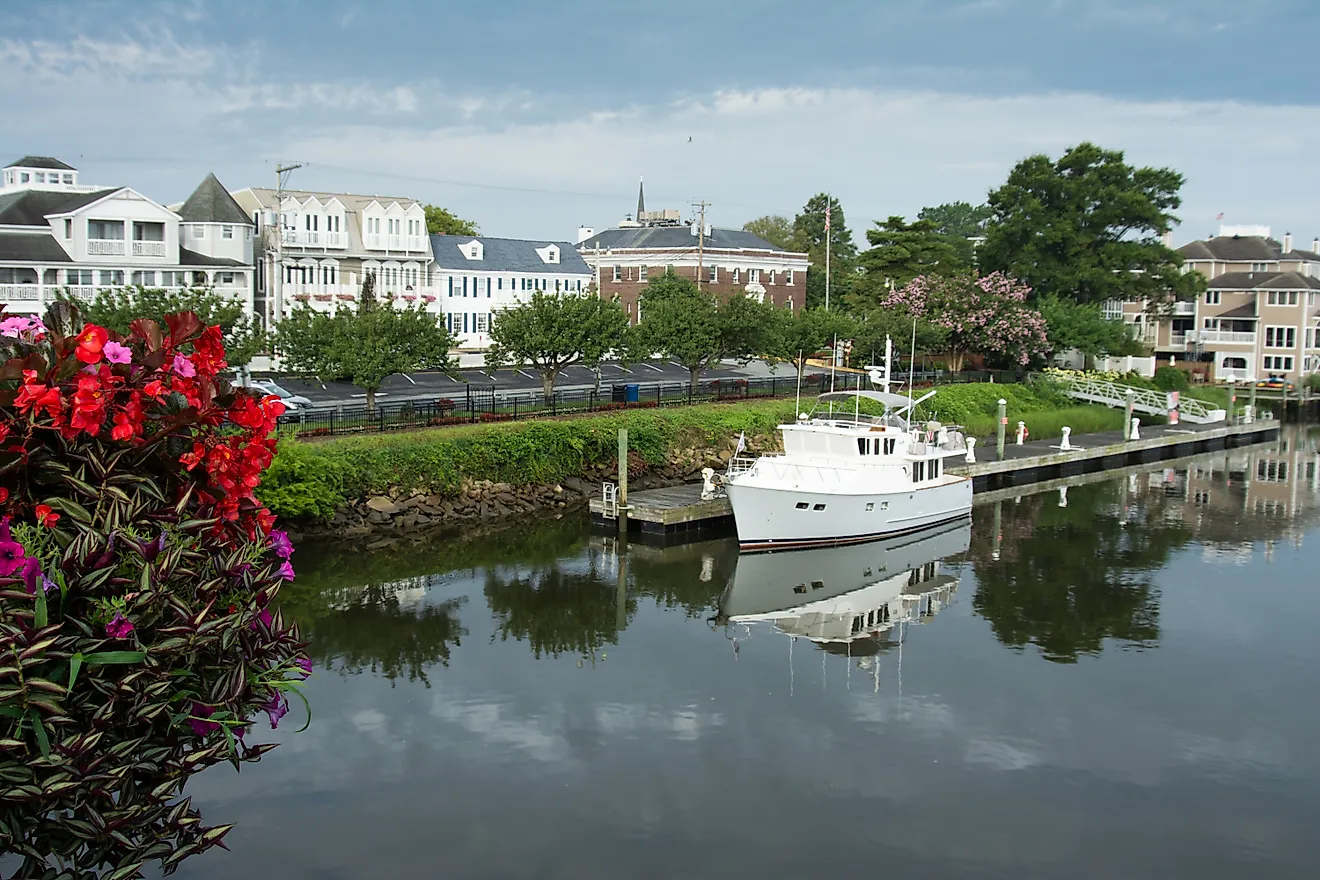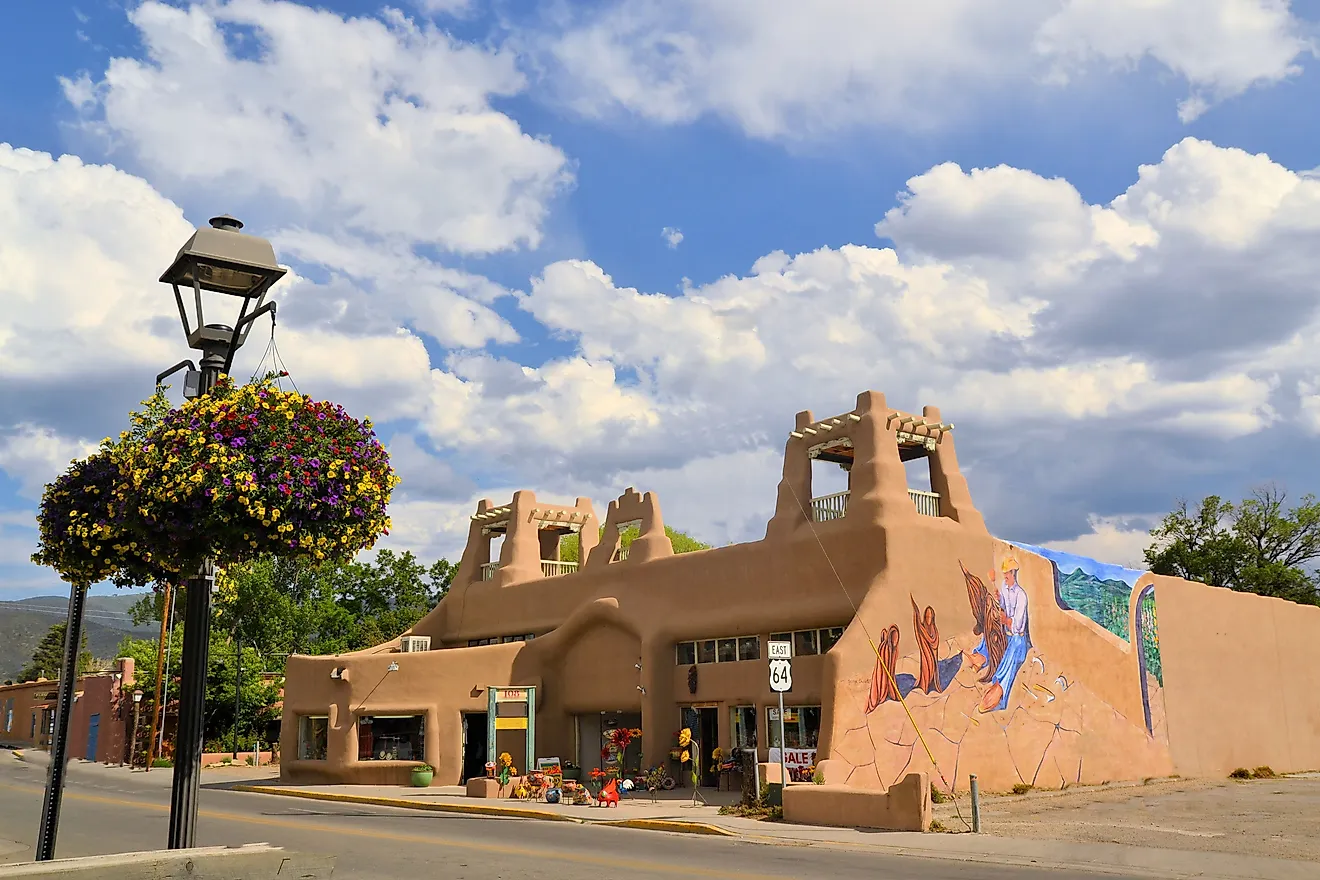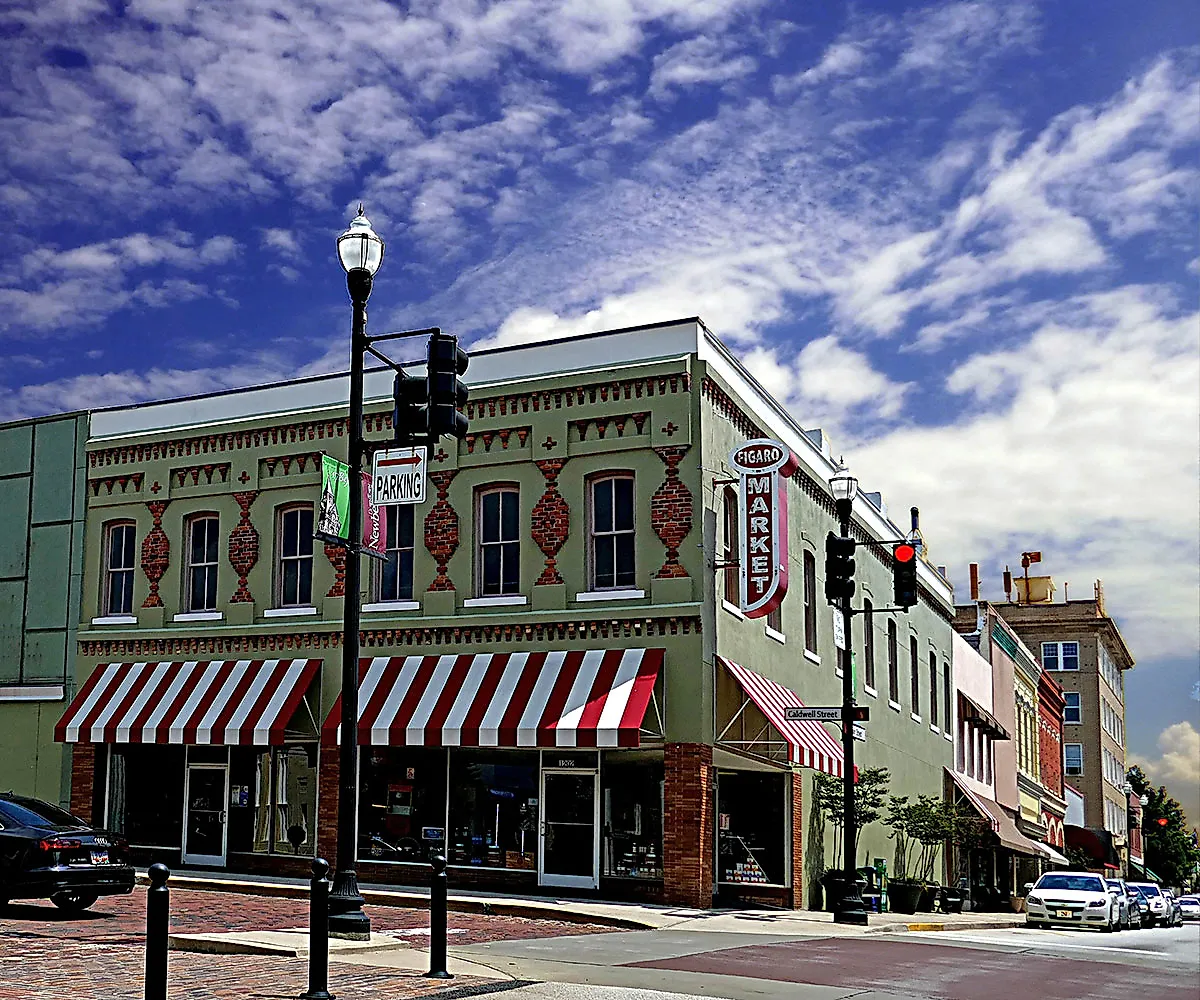
10 Most Comfortable South Carolina Towns For Seniors For 2025
South Carolina sells the art of moving slowly without losing momentum. From sea islands where mail still rides a skiff to sandhills towns paved with pine needles instead of potholes, the Palmetto State hides a comfort economy in plain sight: benches per block, shade where you need it, errands that fit between breakfast and the afternoon forecast. The following ten retirement towns aren’t places to reinvent yourself. They’re places to keep your habits intact and make them easier. Comfort, in South Carolina, is by design.
Hilton Head Island
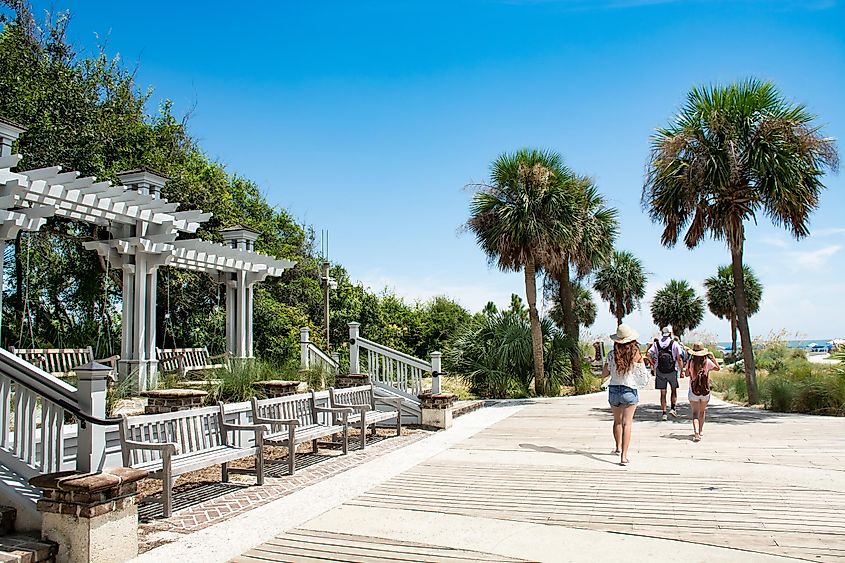
Hilton Head Island isn’t a typical beach town; it’s a meticulously planned community where preservation came first. Nearly 70% of the island remains undeveloped or protected, which gives it a quiet, unhurried rhythm that's rare on the southeastern coast. The island was one of the first eco-planned resort communities in the U.S., thanks to developer Charles Fraser, who even rerouted roads around live oaks instead of cutting them down. There are strict sign ordinances, minimal neon, and no high-rises on the beach. For seniors in 2025, that translates to fewer crowds, more trees, and calmer public spaces.
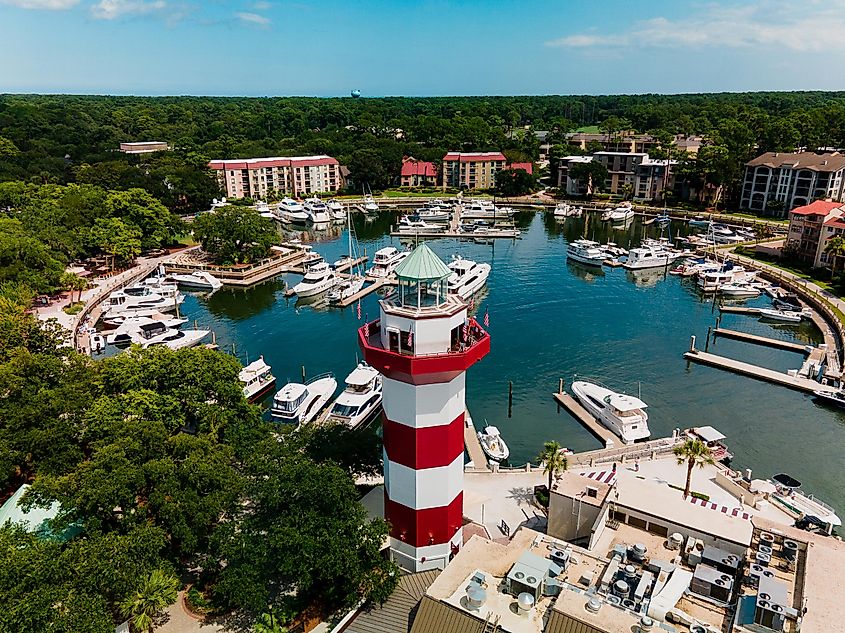
Coligny Beach Park has shaded swings, wide mats over the sand, and bathrooms with real doors, not the usual fiberglass enclosures. The Coastal Discovery Museum, set on Honey Horn Plantation, offers level walking trails, live oak canopies, and indoor exhibits that explain the island’s Gullah heritage. Hudson’s on the Docks, a seafood spot in continuous operation since the 1960s, is wheelchair-friendly and hosts daily sunset views over Skull Creek. Sea Pines Forest Preserve, just inside the Sea Pines gate, provides 605 acres of flat boardwalks and soft pine trails with wildlife viewing platforms.
Bluffton
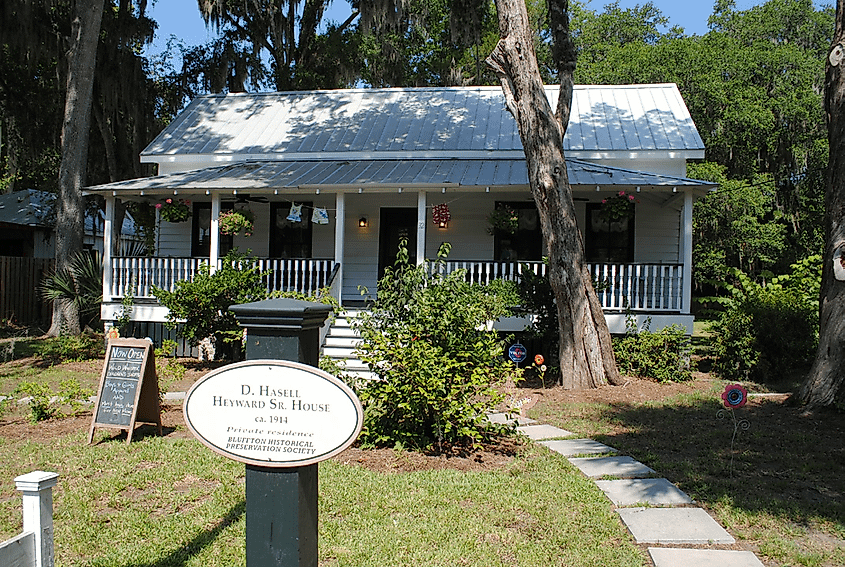
Bluffton sits on a bluff above the May River, and that single geographic detail explains nearly everything about its appeal. Unlike other Lowcountry towns, its original settlement wasn’t built for trade or defense but for escaping inland heat, wealthy families relocated here during summer months to catch the breeze. As a result, Old Town Bluffton developed slowly, without industry or grid planning. What exists today is a walkable core with live oaks, original tabby buildings, and street names like Wharf, Boundary, and Bridge that still make directional sense. The Church of the Cross, built in 1857, overlooks the river and holds afternoon light in a way that rarely fails to stop pedestrians mid-step.
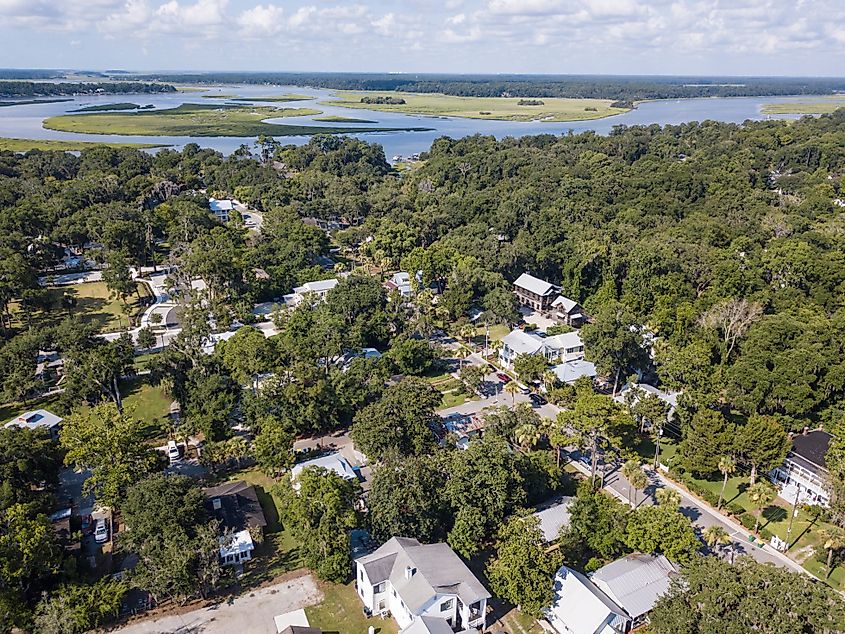
The Bluffton Oyster Company has operated since 1899 and still shucks daily on the dock. Just beyond it, the Bluffton Oyster Factory Park offers level paths, benches under the trees, and wide views of the marsh. Nearby, The Cottage Café serves shrimp salad and iced tea on a shaded porch, and the crowd tends to be older locals. On Thursdays, Calhoun Street’s farmers market draws a steady mix of retired residents and Gullah vendors selling okra, she-crab soup, and rice baskets.
Georgetown
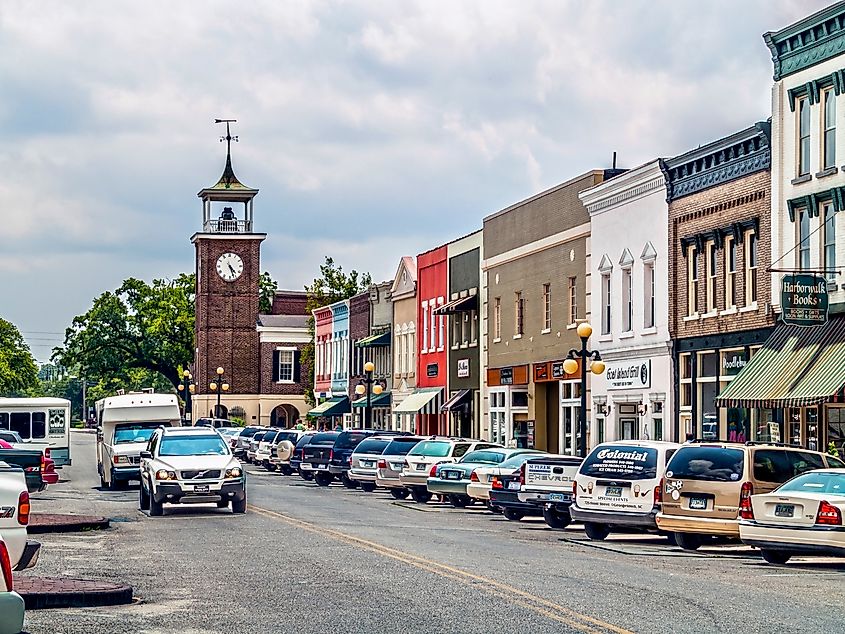
Georgetown is South Carolina’s third-oldest city, but unlike Charleston or Beaufort, its pace has never shifted to match tourism. This is a port town that exported more rice than any city in the U.S. before the Civil War, and its economy faded without ever rebuilding around speed. The Harborwalk is the town’s axis, four blocks of wide, flat boardwalk that connects Front Street’s brick sidewalks with marinas, coffee shops, and old pilings that still lean into the bay. Brown pelicans stay all year. The river is blackwater, not tidal blue, which gives it a stillness. The only sounds most afternoons are lines clinking against masts.
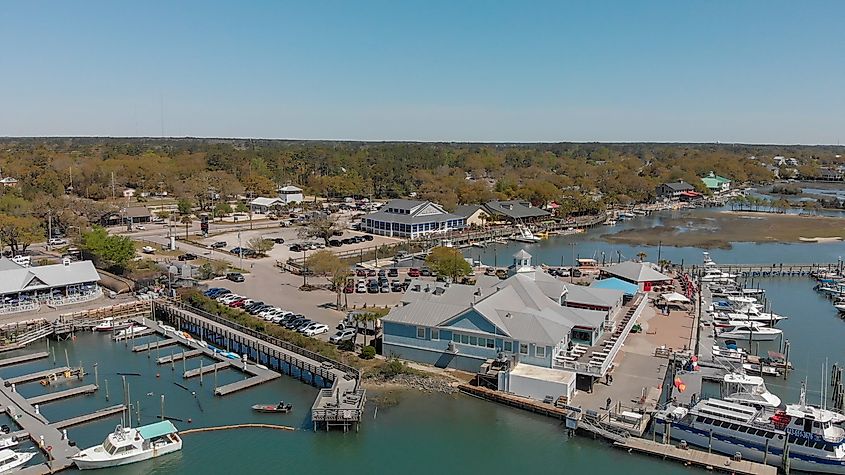
The Kaminski House Museum faces the water and keeps a ground-level lawn open year-round with benches and river views. Brewed Awakenings, on Screven Street, roasts in-house and serves delicious coffee without fanfare. The Rice Museum inside the Old Market Building explains how the nearby rivers made Georgetown wealthy for a century; the elevator to the second floor is functional but rarely needed. East Bay Park, on the opposite side of the peninsula, offers a walking loop with viewlines to Winyah Bay.
Camden
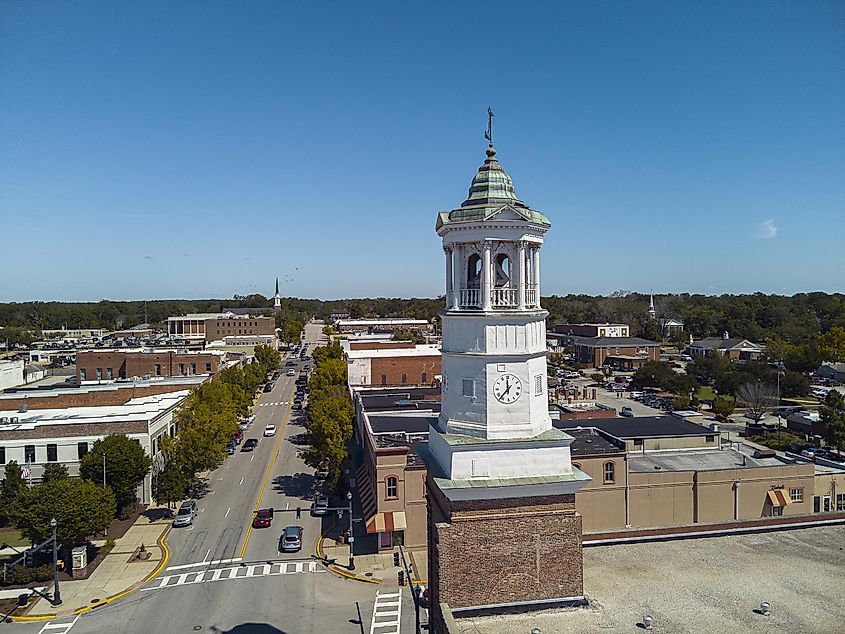
Camden was founded in the 1730s and never needed to reinvent itself. It has remained a town of stables, steeples, and seasonal rhythms tied to horses and heritage. Camden is home to the Carolina Cup, a spring steeplechase event that draws crowds, but for the rest of the year, its equestrian identity unfolds slowly, visible in the training tracks, feed stores, and hitching posts behind downtown buildings. Unlike other small towns, Camden’s residential streets still have names like Lyttleton and Chesnut that date back to the Revolution. The oldest inland city in the state, it was burned and then reoccupied by British forces, leaving behind enough ruins and preserved sites to anchor a museum complex.
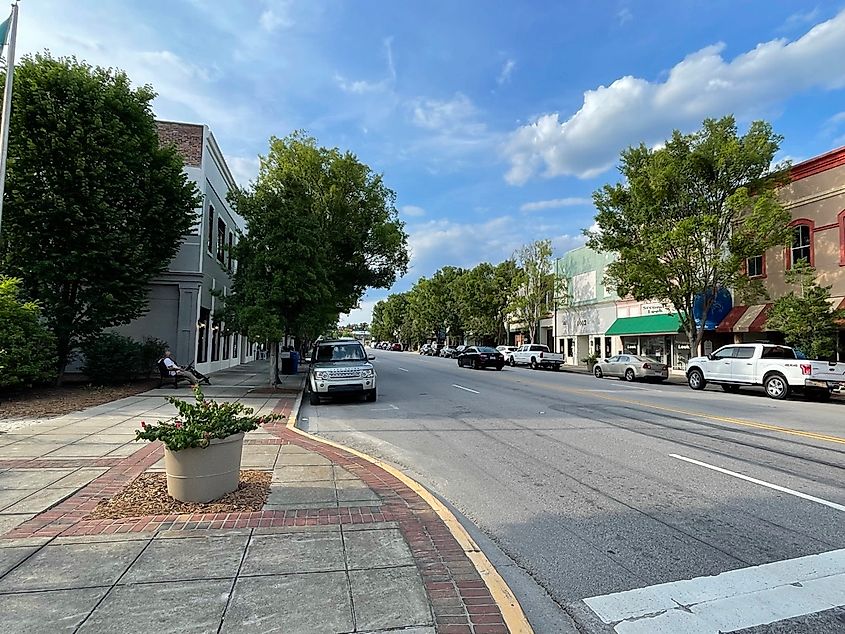
The Camden Revolutionary War Visitor Center connects to a 107-acre historic park with level trails and outdoor exhibits. Books on Broad, located across from the town green, stocks large-print titles and hosts midweek readings with tea. Springdale Race Course sits just beyond city limits and opens for walking during off-season weeks. On Broad Street, Sam Kendall’s operates in a former bank building and serves crab cakes and grits without updating the menu for trends.
Clemson
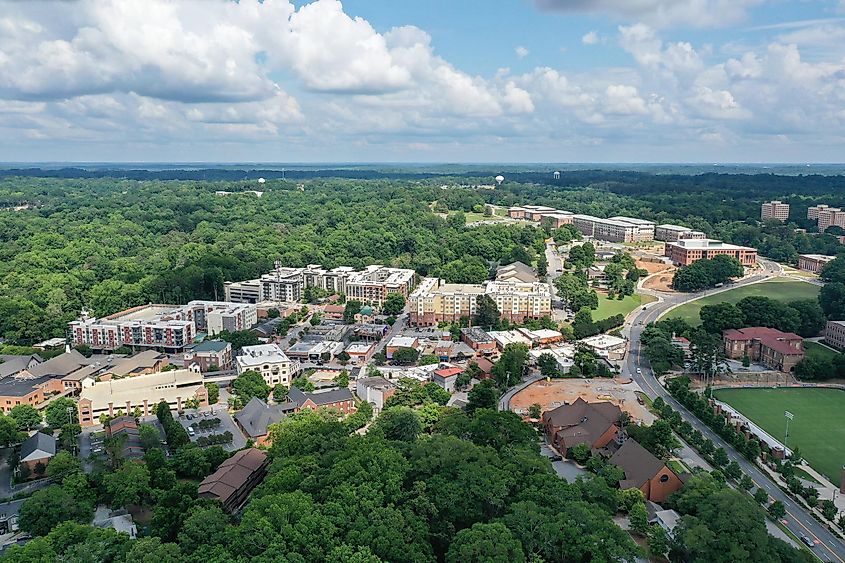
Clemson’s entire downtown sits within a ten-minute walk of a land-grant university with over 27,000 students, but the town has never become dependent on youth. It holds a dual identity, half college, half retirement, and both sides are visible at Sloan Street Tap Room on weekdays around 3 p.m., when students and older locals overlap for beers and small talk. Clemson was originally Calhoun, a farming town on the Keowee River. Its name changed in 1943, but its structure stayed compact. The Amtrak station still operates downtown. Local churches still ring bells at noon. The entire town fits between two lakes and a forested ridge, which keeps traffic light and views unobstructed.
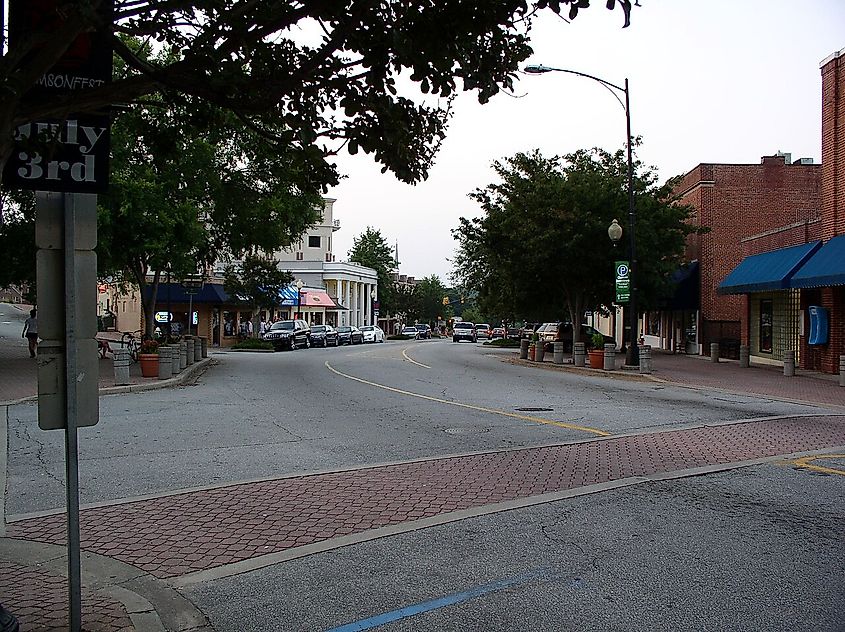
The South Carolina Botanical Garden covers 295 acres but is built with short loops, benches, and paved access points. Lake Hartwell’s Twelve Mile Recreation Area has designated fishing piers and an open-air shelter near the waterline. Fort Hill, the former home of John C. Calhoun, offers first-floor tours and shaded paths around its foundation. SunnySide Café on College Avenue opens at 7 a.m. and serves grit bowls and decaf by 7:05.
Conway
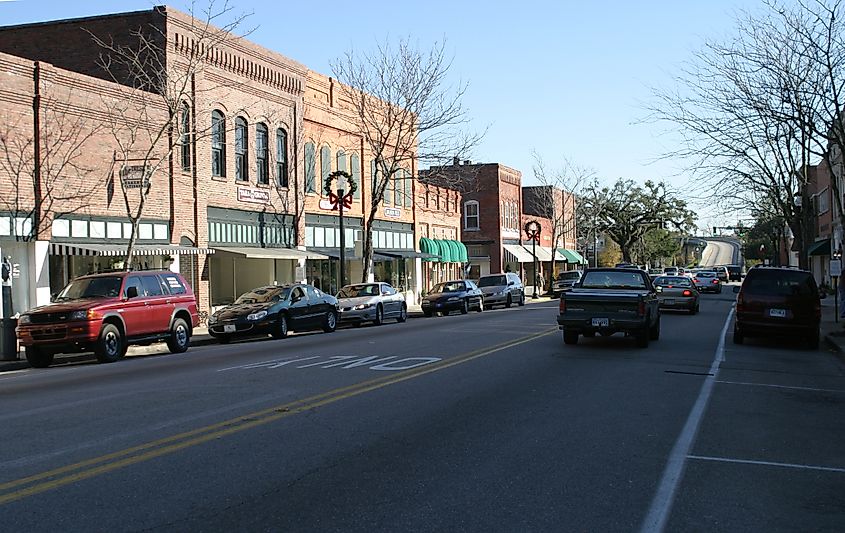
Conway was laid out in 1732 with twelve streets, and many of them still follow the original grid. Unlike neighboring towns that expanded outward, Conway grew inward, denser but not louder. The Waccamaw River defines its rhythm. It curves behind Main Street and slows everything down. Live oaks along the Conway Riverwalk are named and tracked by the city, including the “Lone Sentinel,” which predates the American Revolution. Flood markers on the pilings show how often the river rises, but the sidewalks are built high enough to keep shops dry. On weekday mornings, the only traffic comes from delivery trucks and retirees walking dogs.
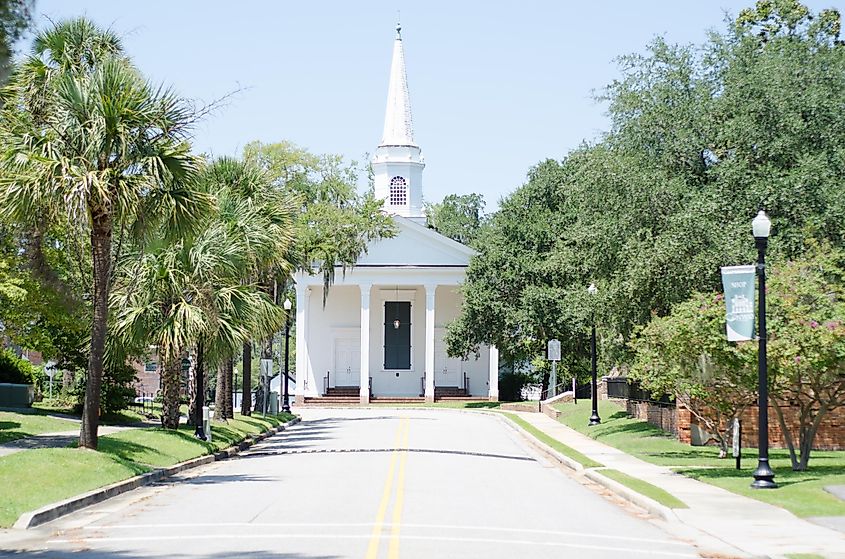
The Horry County Museum operates out of a former courthouse and holds a freshwater aquarium of native fish just inside the lobby. Theatre of the Republic, one block down Main, stages plays cast with locals and seniors. Bonfire Taqueria, in downtown, seats early and serves rice bowls with house-pickled vegetables. Palmetto Farms grits are sold at the farmer’s market every Saturday next to the train tracks.
Seneca
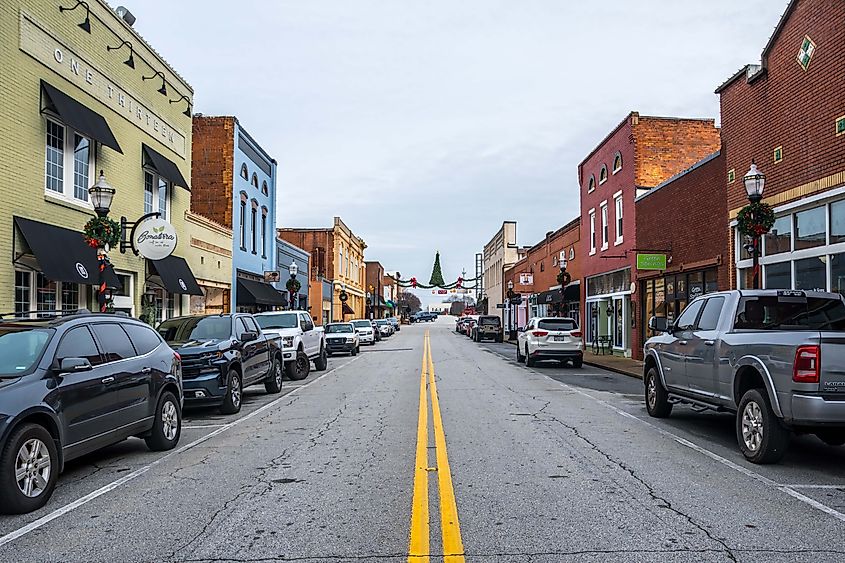
Seneca was built by the railroads in 1873, where two lines crossed near the Blue Ridge foothills. Unlike most towns that began with a courthouse or port, Seneca started with depots and timber, then slowed down once Lake Keowee and Lake Hartwell were constructed in the 1960s. Those reservoirs changed everything. Today, Seneca sits between two bodies of water, neither of which allows high-density development along the shore. That has kept noise, sprawl, and congestion low. Ram Cat Alley, the original commercial strip, now holds antique stores, a record shop, and the Green Springs café, known locally for egg salad and sugar cookies made daily by hand.
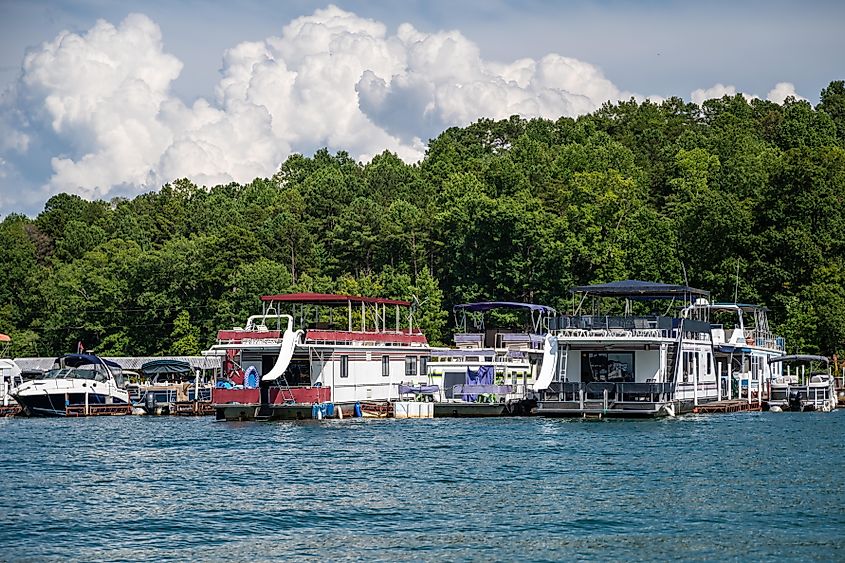
South Cove County Park, five minutes from downtown, has a long, paved path along Lake Keowee with fixed benches and no elevation gain. The Lunney Museum occupies a 1909 Queen Anne home and holds rotating displays of regional glass and textiles. Blue Ridge Arts Center, located inside a former church, hosts workshops where most participants are over sixty. The Wednesday farmers market under the covered pavilion sells boiled peanuts, fresh trout, and preserves in small-batch jars.
Newberry
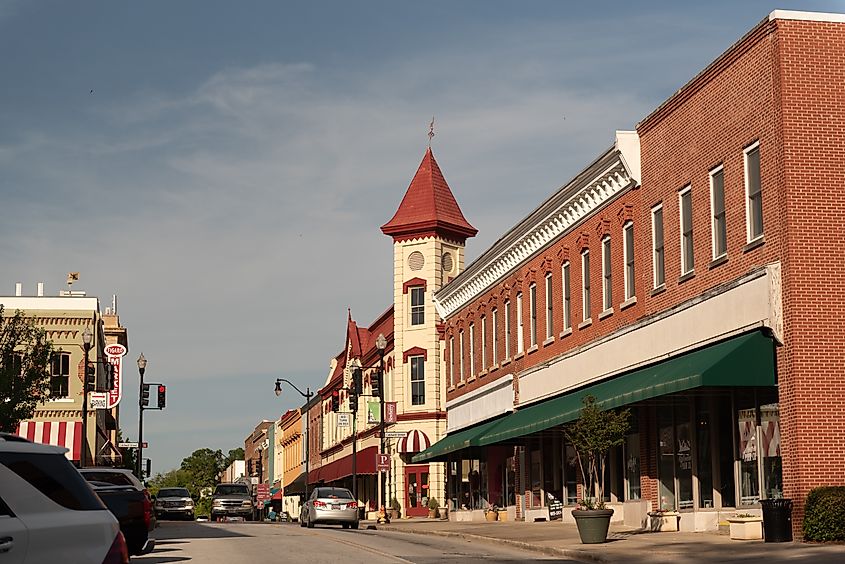
Newberry’s downtown revolves around a clocktower that has never stopped working. Built in 1882, it still strikes the hour and holds its place as the tallest structure in town. Newberry never outgrew its square, and that has kept foot traffic, noise levels, and distances manageable. The Newberry Opera House, restored in 1998, now books acts year-round, from string quartets to gospel groups, most of them starting before 8 p.m. The sidewalks surrounding the venue slope gently and are bordered by benches, making the area walkable without modification. Newberry’s layout hasn’t changed much since the 19th century. Brick storefronts still carry family names, and weekdays move at a tempo more aligned with conversation than commerce.
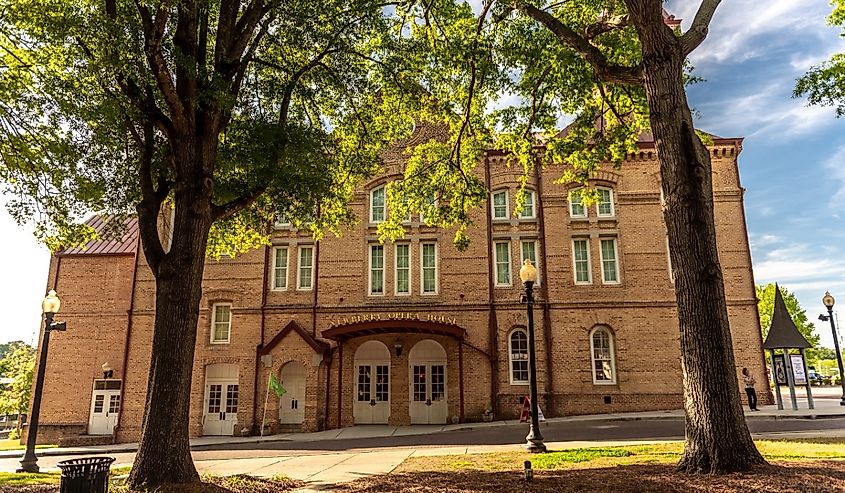
Wells Japanese Garden, less than a mile from downtown, has a torii gate, koi pond, and stepping stones wide enough for stable walking. Halfway between the garden and the square, Figaro Market sells boxed lunches and cold brew from a counter that doesn’t rush. Enoree River Winery sits seven miles outside town and hosts slow-paced tastings in a covered shelter with fans and rockers. The The Newberry Museum, inside a former jail, contains permanent displays on the Palmetto Trail and local textile mills.
Spartanburg
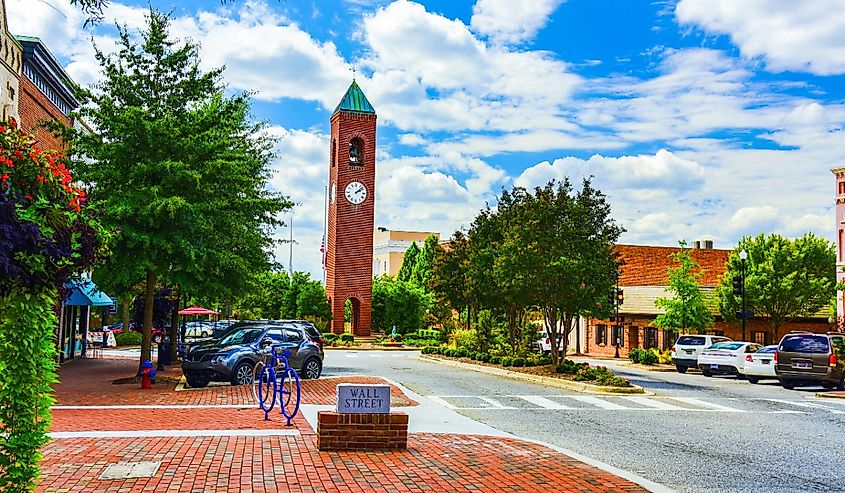
Spartanburg runs on rail lines, and always has. At one point, seven railroads met here, earning it the nickname “Hub City,” a term still used by locals and posted above coffee shop doors. Though freight traffic has slowed, the old rail beds now serve as walkable spines for neighborhoods, parks, and senior housing. The city’s Mary Black Rail Trail cuts through the east side with a flat, paved corridor used daily by walkers with canes and trikes with flags. Unlike towns built around rivers, Spartanburg was built to move goods, not to impress travelers, and that has kept its sidewalks wide and zoning low.
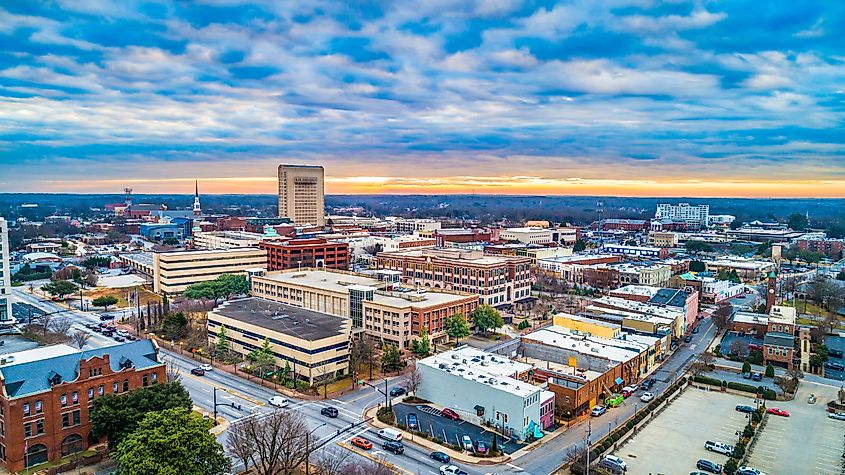
Hatcher Garden and Woodland Preserve, located off John B. White Sr. Boulevard, offers benches, paved loops, and shaded flowering paths. The Chapman Cultural Center anchors the downtown green and houses both the Spartanburg Art Museum and music school under one roof. On Liberty Street, the Holmes Hotdogs serves chili dogs, banana splits, and bottled Cheerwine at booths with laminated menus. On Saturday mornings, seniors gather at Little River Coffee Bar for pour-overs and bagels, often lingering until lunch.
Myrtle Beach
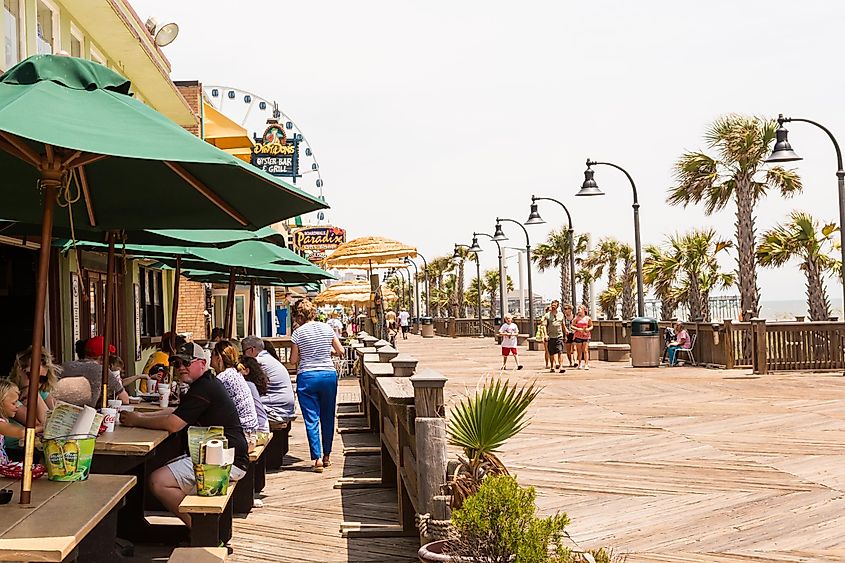
Myrtle Beach has more putt-putt courses per square mile than any city in the U.S., but that’s not what defines it. Beneath the neon and surf shops is a grid of low-rise neighborhoods built in the 1970s and ’80s for returning retirees. Many of those blocks, between Kings Highway and U.S. 17 Bypass, are still zoned for single-level homes, with sidewalks, medians, and direct access to beach parks. The city doesn’t rely on a single boardwalk or marina. Instead, it spreads its amenities across miles, which flattens the pressure on any one district. That allows older residents to move without navigating bottlenecks.
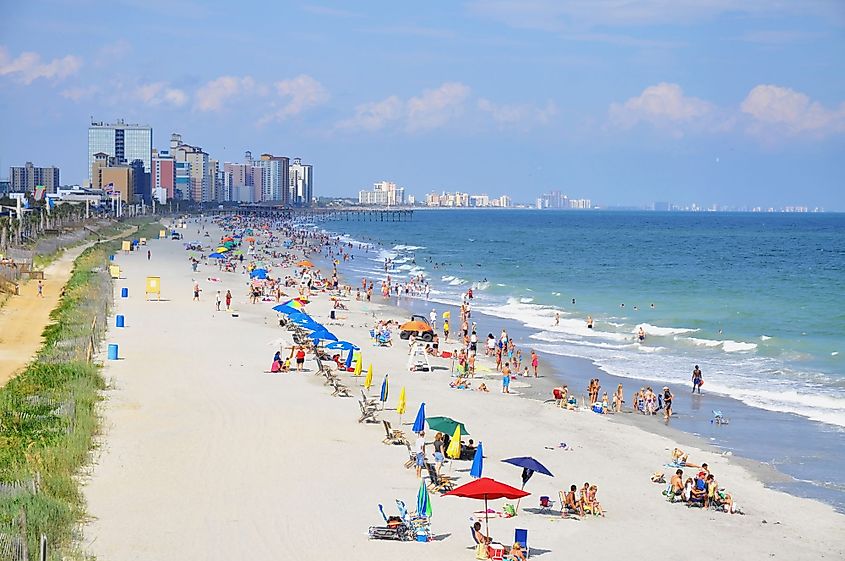
Myrtle Beach State Park offers shaded trails, ADA-accessible boardwalks, and fixed pier access to the Atlantic. Brookgreen Gardens, just south in Murrells Inlet, maintains paved sculpture paths, historical graveyards, and a quiet zoo with benches spaced every 100 feet. Benjamin’s Bakery in Surfside Beach opens at 7 a.m. and sells pumpernickel bagels and lox to locals who come daily. The Franklin G. Burroughs-Simeon B. Chapin Art Museum displays coastal-themed works in a converted beach house near Springmaid Pier.
Beaufort
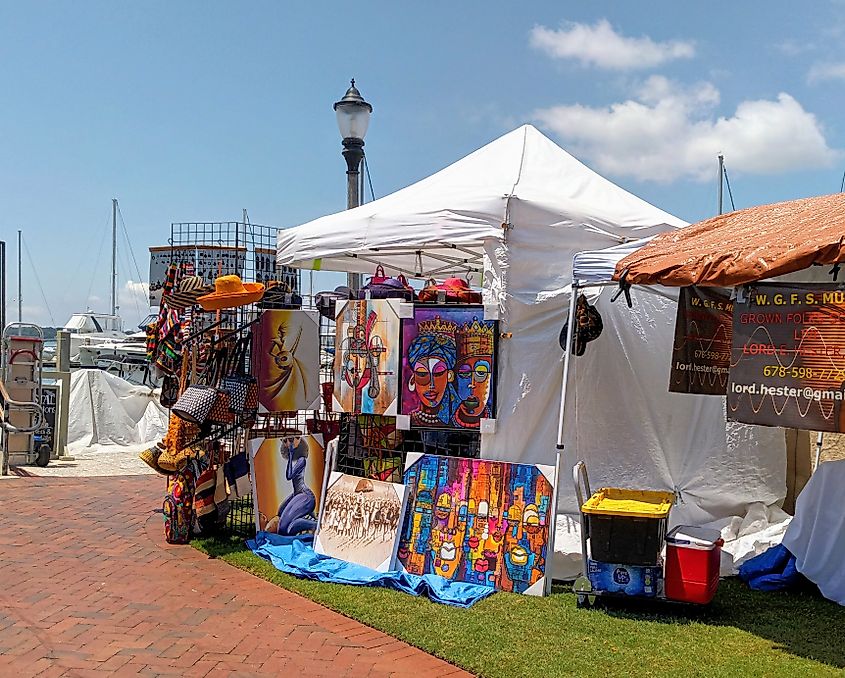
Beaufort is the only town in South Carolina where mail is still delivered by boat to residents on surrounding sea islands. Founded in 1711 and protected by barrier marshes, it avoided major destruction during the Civil War and now holds the largest collection of antebellum architecture in the state outside Charleston. Bay Street curves with the shoreline, not the grid, and that bend has kept its scale small, low buildings, narrow shops, and short distances between shaded benches. Spanish moss isn’t planted here; it grows where it wants. Walkers share the sidewalks with tree roots and sea breezes that come off the Beaufort River with consistency.
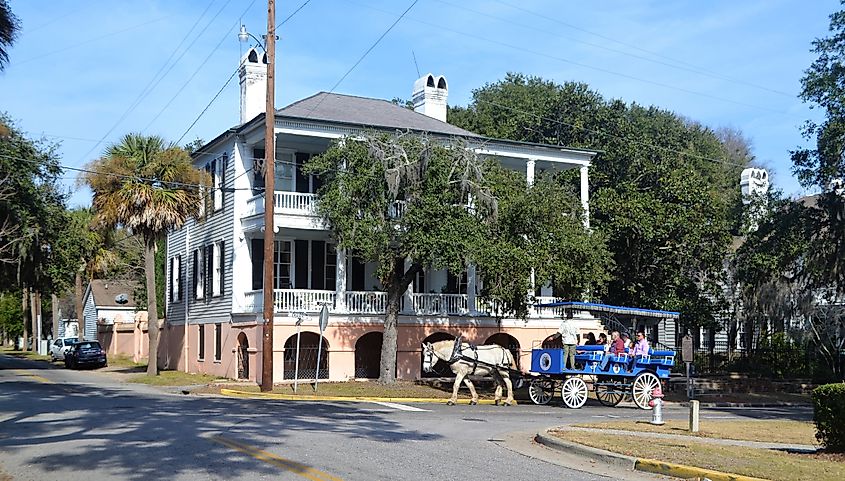
Henry C. Chambers Waterfront Park runs parallel to Bay Street and includes swings, wide brick paths, and access to the marina’s fixed docks. Blackstone’s Café serves coffee and eggs until 11, and most of its regulars walk from within five blocks. The Pat Conroy Literary Center sits behind a residential fence line and offers rotating exhibits from Conroy’s journals and teaching notes. Hunting Island State Park, twenty minutes away, includes a level boardwalk to a saltwater lagoon and access to the only publicly climbable lighthouse in the state.
Aiken
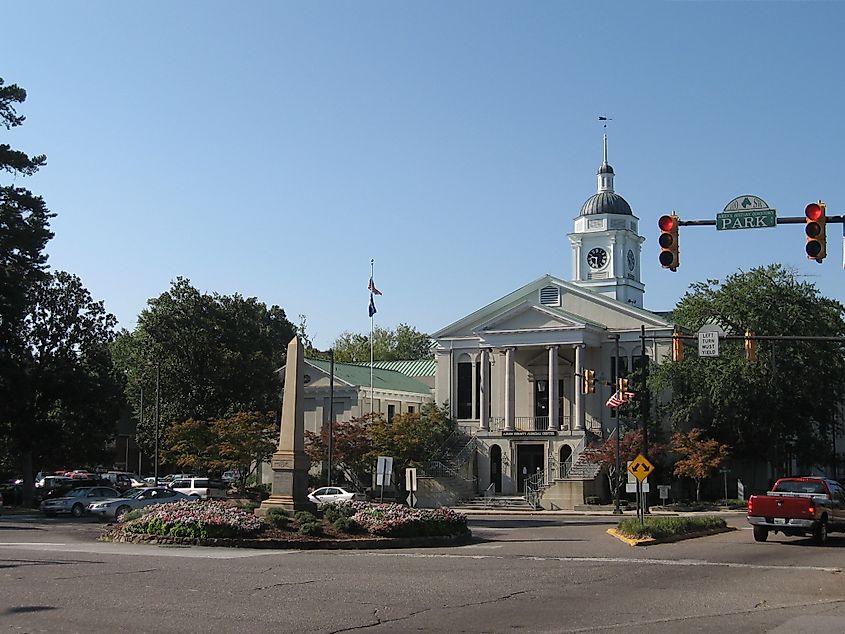
Aiken was built around sand, not soil. Its position on the fall line, where the Piedmont drops to the coastal plain, made it a health retreat long before it became a horse town. In the late 1800s, Northerners came here to escape winter and treat respiratory conditions, planting longleaf pines and creating wide boulevards for carriage rides. Those same boulevards now serve walkers, cyclists, and older residents who benefit from shade, wind breaks, and flat terrain. Traffic circles, not stoplights, set the pace. Horses still have right of way in parts of downtown, and the downtown hitching posts are used weekly.
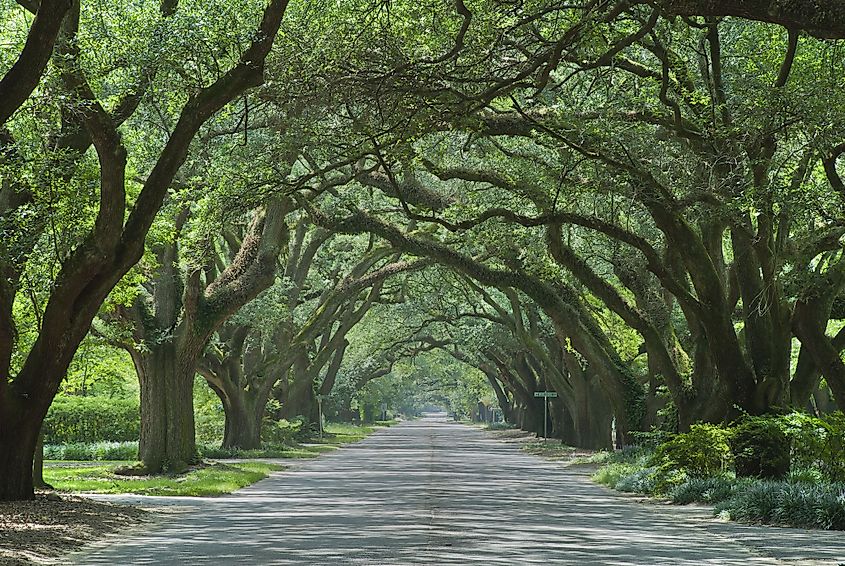
Hopelands Gardens, once part of a private estate, now offers paved paths beneath magnolia trees and a lawn that hosts chamber concerts in spring. The Aiken Thoroughbred Racing Hall of Fame, inside the garden gate, catalogs steeplechase and flat-track records with emphasis on horses trained locally. New Moon Café on Laurens Street opens at 6:30 a.m. and serves oat muffins and coffee to a mix of regulars who arrive without checking the clock. The Hitchcock Woods entrance on Dibble Road opens into one of the country’s largest urban forests, where trails are sand-based and signed clearly.
Across tidewater, sandhills, and foothills, these towns prove comfort is infrastructure, not marketing. Flat paths, early curtain times, benches in shade, clinics near groceries, and routes that bypass chaos, small choices that preserve independence. In 2025, South Carolina’s strength is predictability: errands on foot, parks with seating, culture that ends before dark, and neighbors who wave from porches. Result: age forward, not smaller, with room for steady routine, salt air, and quiet.
